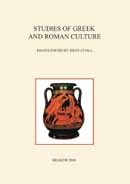Charos psychopompos? Tracing the continuity of the idea of a Ferryman of the Dead in Greek culture
Charos psychopompos? Tracing the continuity of the idea of a Ferryman of the Dead in Greek culture
Author(s): Michał BzinkowskiSubject(s): Cultural history
Published by: KSIĘGARNIA AKADEMICKA Sp. z o.o.
Summary/Abstract: During his journey to hell, after crossing the “vestibule” together with his guide Virgil, Dante reaches the river Acheron, which is also the passage to the proper Inferno. They are welcomed by the ferryman Charon, an old bearded man (un vecchio, bianco per antico pelo, Canto III , 83) with flames around his eyes (che ‘ntorno a li occhi avea di fiamme rote, Canto III , 99). Shouting at Dante, he does not want to allow him to cross the river as he is still alive. The image of Dante’s Charon is undoubtedly the one that has haunted European imagination and inspired painters such as Gustave Doré (1832-1883), French engraver and illustrator known, among other things, for his illustrations of Divine Comedy, or Alexander Litovchenko (1835-1890), a Russian painter, who was awarded a lesser gold medal for the picture of Charon transporting the dead. Dante’s Charon is by no means original; his main source of inspiration for creating the infernal boatman was Virgil’s Aeneid, where we come across the most important depiction of Charon, that exerted a great influence on later writers.
Journal: Classica Cracoviensia
- Issue Year: 2009
- Issue No: 13
- Page Range: 17-33
- Page Count: 17
- Language: English

